Ben Whiteman signed for Sheffield United after coming through Manchester United’s Youth Academy until he was 16 years of age.
The midfielder got his break following a loan move to Doncaster Rovers. Whiteman went on to play 133 times and also became club captain.
In 2021, Preston North End signed the midfielder for a reported fee of £1.6 million. Following the signing of Tom Bayliss in 2019, which ultimately failed and for a fee in a similar region, Preston North End fans were hopeful that Whiteman would turn out to be a success.
After completing his first full season in the Championship last year, he played under two different managers and was instrumental for both, playing in 44 games out of a possible 46. The importance of Ben Whiteman to his Preston team is massive.
Last season, Whiteman was one of the best midfielders in the league but not much media attention was drawn to him. This tactical analysis scout report will cover his strengths and highlight his ability as well as the tactics that have helped him to excel.
Player profile
As mentioned above, Whiteman has been heavily involved in his side’s play over the last 18 months with a massive number of appearances. Aged 26, he is reaching his physical peak and is really kicking on in terms of his overall ability as well.
Last season, Preston North End generally set up in a 3-5-2 or a similar variation. Whiteman was mainly deployed as a ‘6’ in the midfield but has also featured as an ‘8’. He tends to perform best as a single pivot due to his comfortability on the ball and with the requirements of that role in Preston’s system.
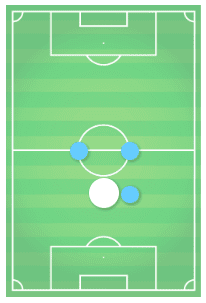
As you can see, the visual above highlights all positions played by Whiteman, the white dot is the role Whiteman has played the most.
Whiteman has also played as a double pivot in a 4-2-3-1 and is comfortable in doing so. This is something that Preston boss Ryan Lowe might consider implementing this season, but more on that later.
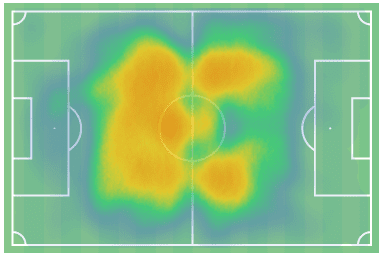
Looking at the heatmap, Whiteman dominates the midfield area and is mostly found deep in the middle part of the pitch. He executes the ‘6’ role excellently and is able to dominate the midfield. His positioning on the pitch is always very central, maintaining the team shape and structure.
The light area around the box on the left shows how Whiteman acts during the build-up phase of the game as he drops deep to receive the ball.
Whiteman is the perfect build for a modern-day midfield player. At 6ft 1”, tall he can physically dominate sides but also be mobile enough to cover the pitch.
Defensive ability
Defensively, Whiteman is very strong. His ability to read the game, intercept and make tackles is something that brings great value to any midfield player, especially a ‘6’. Whiteman is not known to be an out-and-out defensive-minded player, as his ability on the ball is usually what gets him his plaudits.
Last season, Whiteman ranked highly for PAdj interceptions per 90 with 7.67. He also scored highly in the successful defensive actions per 90, making him one of the best defensive midfield players, based on these stats.
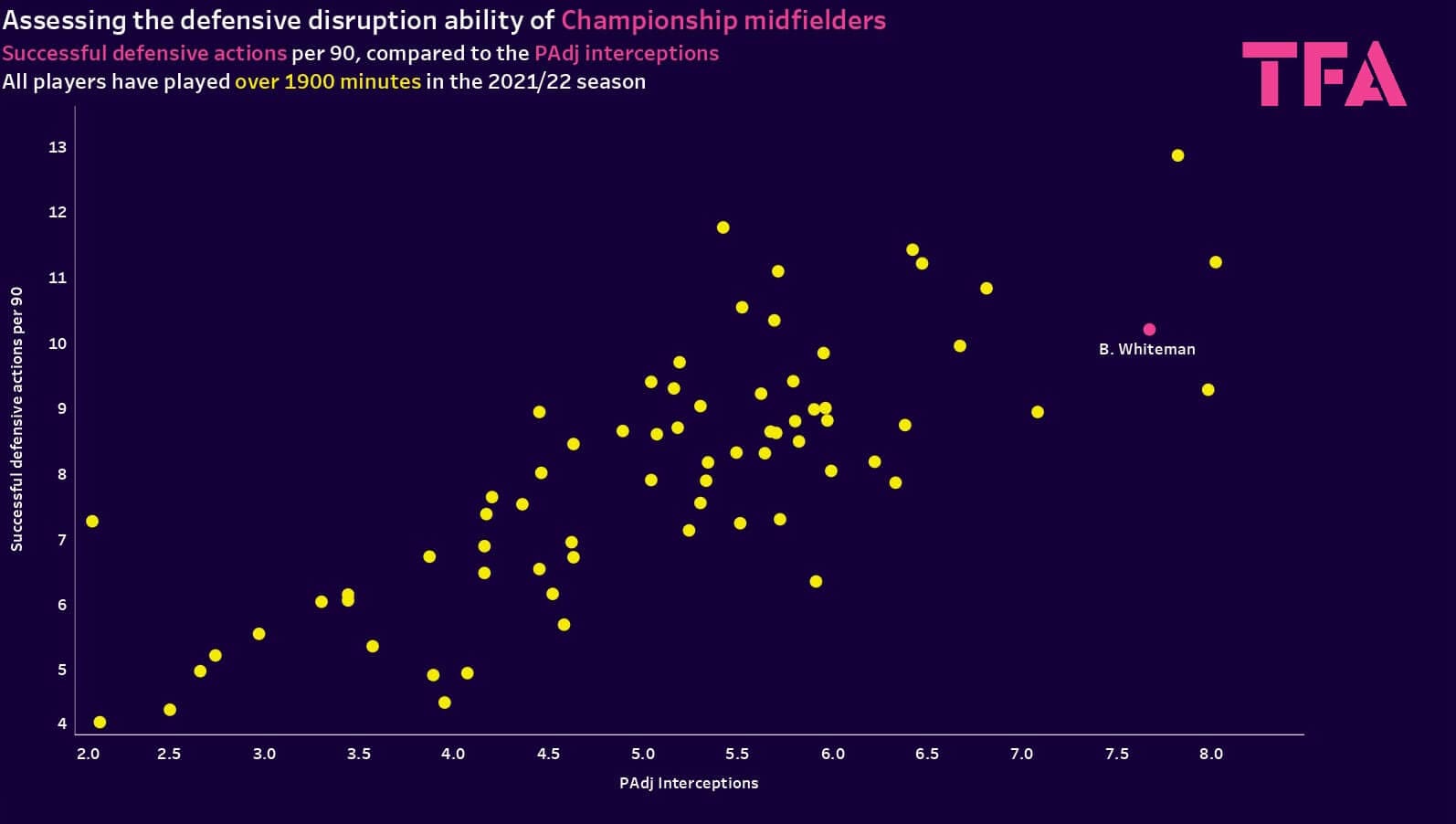
Below, you can see Whiteman making an interception. His body shape and positioning allows him to make a quick move to block potential passing lanes.
As well as being agile and quick to react, his ability to read his opponents means he can predict where passes are likely to go. Playing as the deepest of a midfield three, it is vitally important that Whiteman is able to screen the defence and make these interceptions.
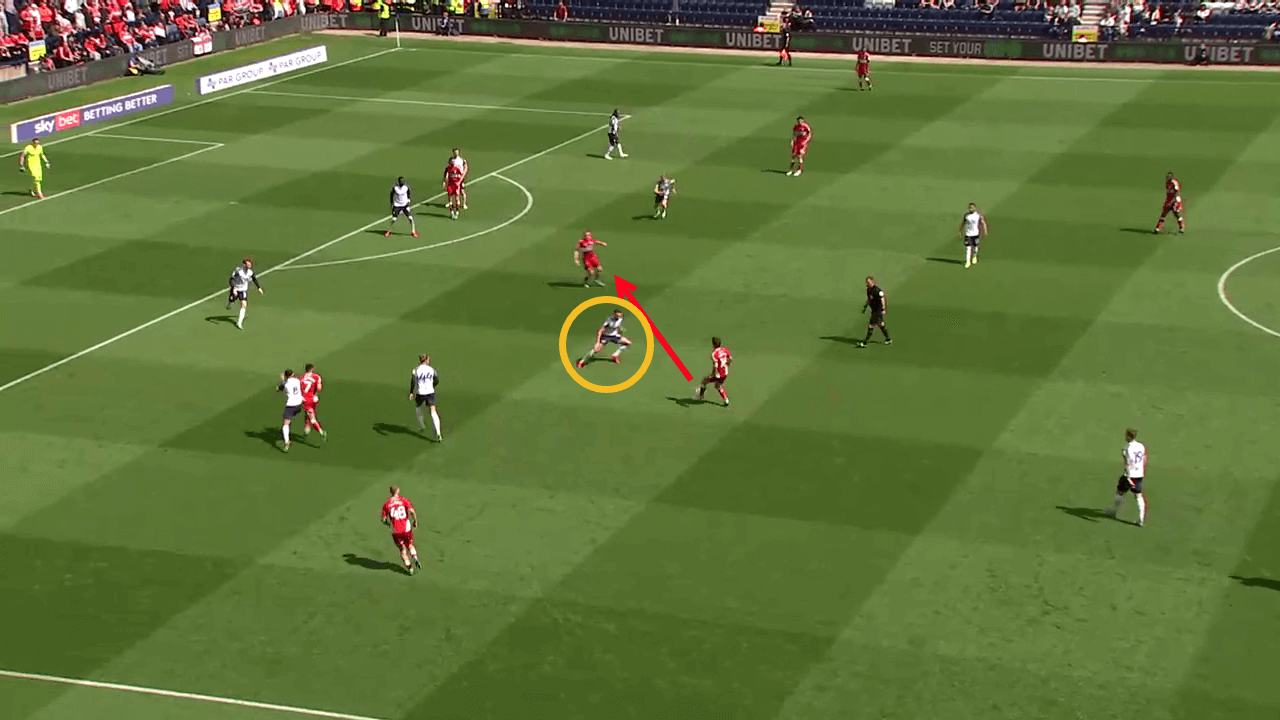
Furthermore, his aggressiveness off the ball is supported and encouraged by manager Ryan Lowe. Preston ranked third for PPDA (Passes per defensive action) with 9.06, meaning that the team likes to press and engage with their opponents. As well as this, Preston had the highest challenge intensity in the league with an average of 7.1. Ben Whiteman sets the tone for his team in the midfield as he is so successful in defensive actions.
Below is an example of how Whiteman steps out of his defensive role to engage in play and ultimately win the ball back from the opposition. His timing of tackles is exceptional and often pinches the ball in tight areas, he averages 1.25 per 90, which is relatively low considering his role and the team’s style of play. For comparison, teammate Ryan Ledson — who plays a similar role — averaged 1.67 per 90.
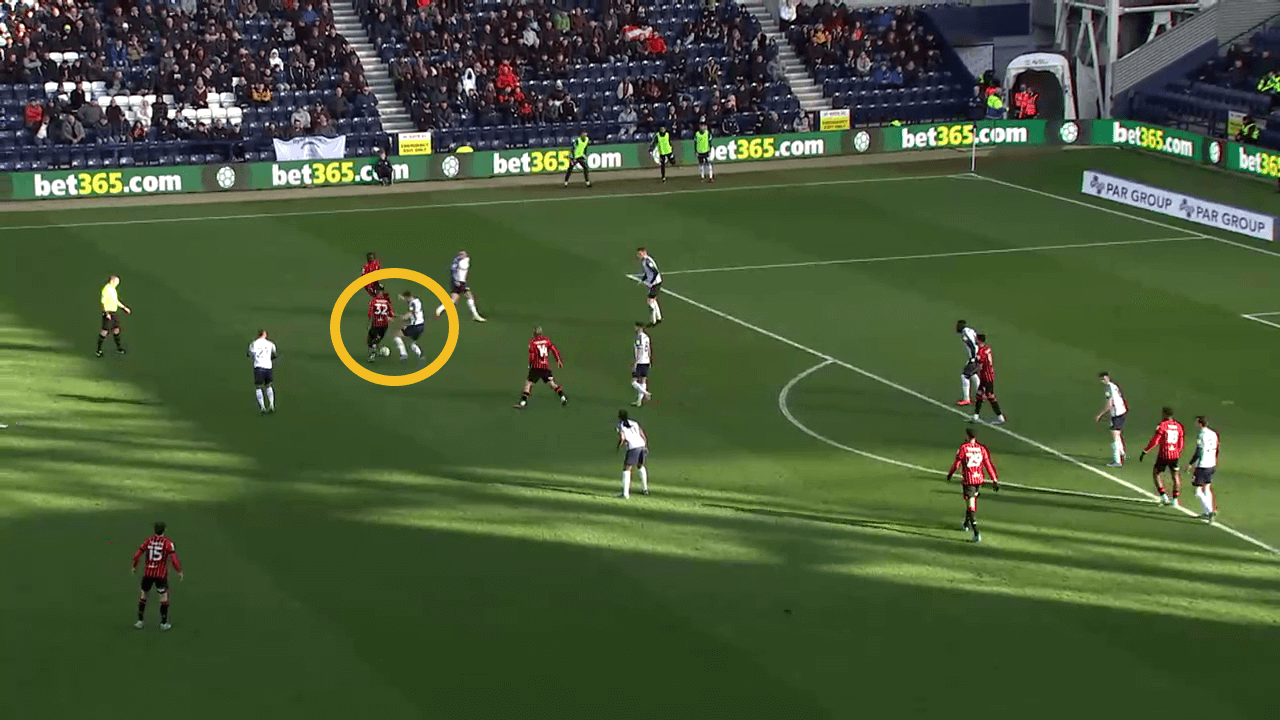
Furthermore, Whiteman can make up ground to press and cover teammates. As you can see, all of his strongest traits come into play in the in-game example below, as he reads the pass early and then times a tackle well to regain possession for his team.
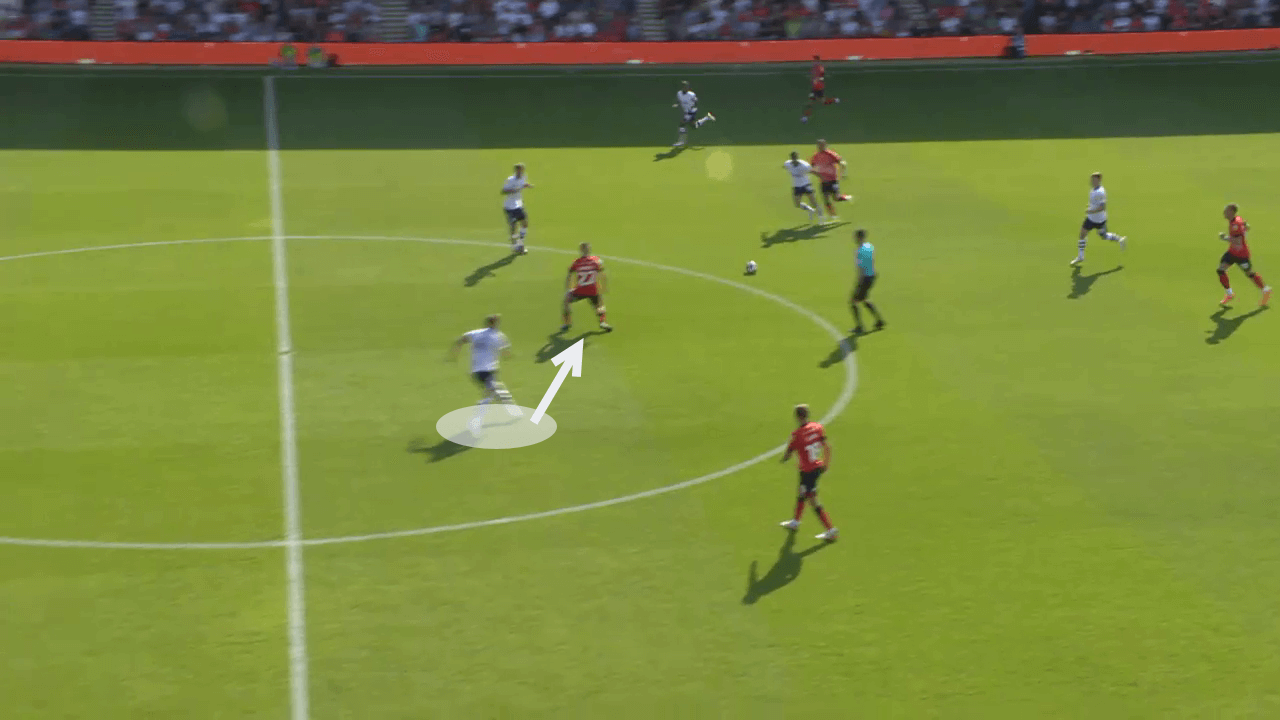
The aggressive nature of Whiteman adds balance to the Preston team as he is rarely caught out of position. His defensive discipline means that the two ‘8s’ can advance further up the pitch, knowing a solid base is behind them for their protection.
In possession
With the ball at his feet, Whiteman is one of the most comfortable players in the league. His confidence and composure allow him to play a range of passes showing his ability.
Last season, he ranked highly for long passes and forward passes. This tells us his style of play and how he has adapted to his role at Preston North End.
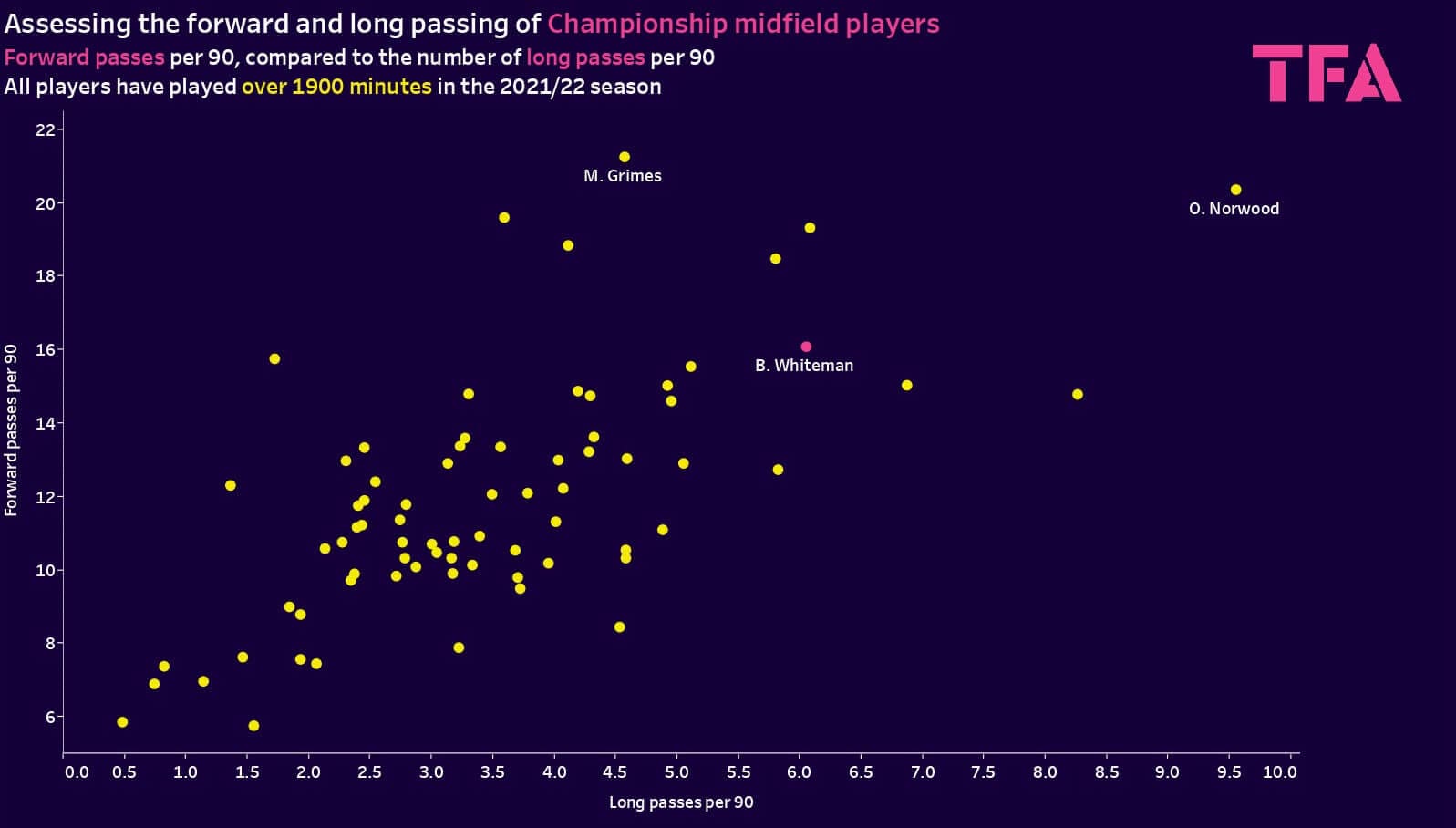
As the visual shows, Whiteman is up there with the best in the league for forwards passes. His style helps his Preston team build up and progress through the thirds. He dictates play and is always a viable option to pass too.
On the ball, Whiteman is able to complete killer passes which lead to chances. He has a great awareness of where his teammates are on the pitch at all times, which comes down to how often he scans the pitch. By doing this, he has a clear ‘picture’ in his head and is always one step ahead.
Last season in the Championship, Whiteman racked up 5 assists, playing a deeper midfield role. An impressive feat for a holding midfield player. His long-range passing is the cause of his high assists. Below is an example of how he executes a perfect ball to a teammate, which results in a goal.
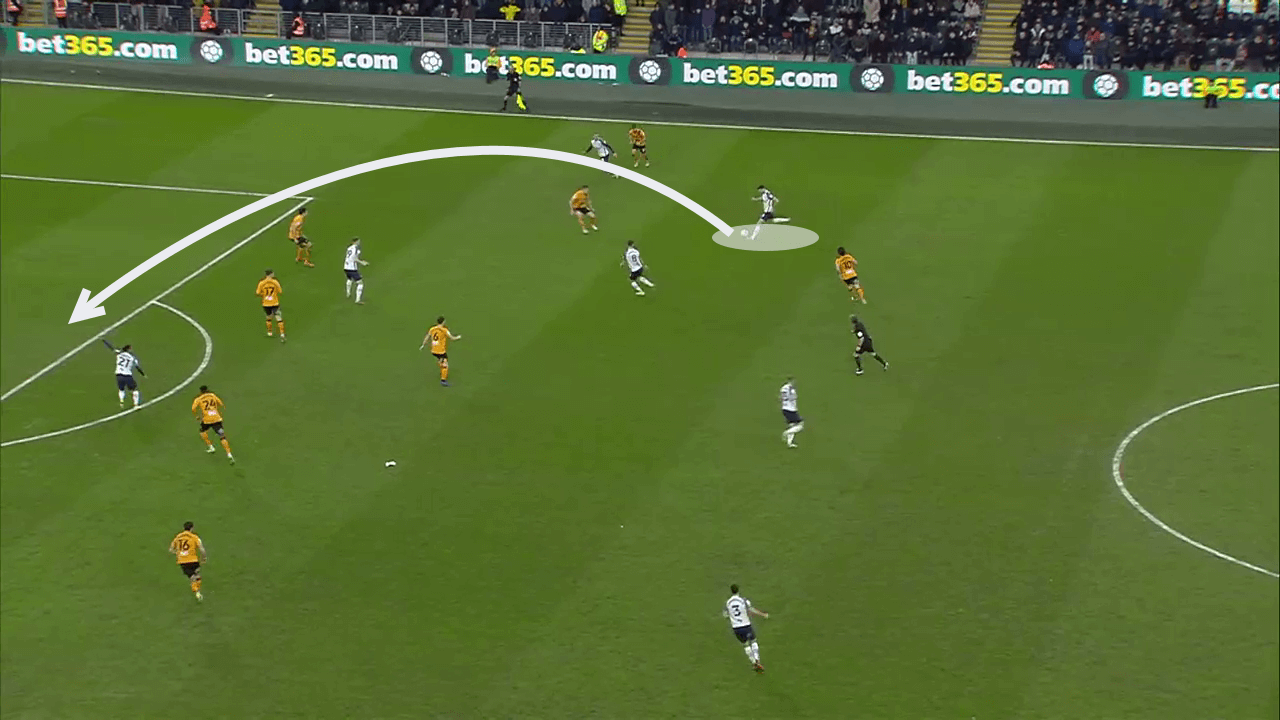
His ability to control the ball and see the run before executing a perfect pass is something that makes him so valuable when it comes to breaking down the opposition defence.
Furthermore, being comfortable on the ball also gives Preston great confidence when in possession. Having Whiteman in the team is so important as he can receive the ball in tight areas.
An example of how he helps the flow of the game continue is when he receives the ball with an opponent tight to him, before laying the ball for a teammate and then exploiting the space. As you can see below it is an important skill for any midfielder to master as often there is no time to receive the ball and take two or three touches.
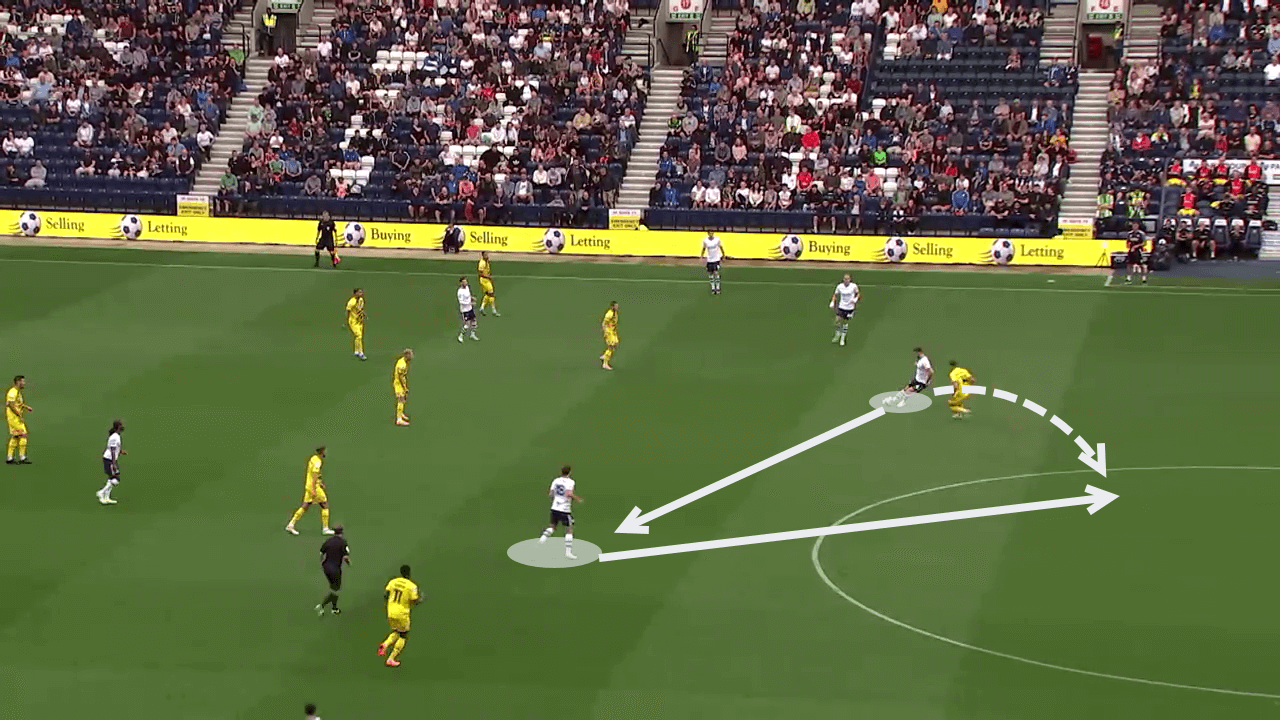
A development of his game that he could implement more is his ability to drive with the ball. His stature and physique make it hard for opponents to dispossess him. Along with this, his passing ability makes him dangerous when travelling with the ball.
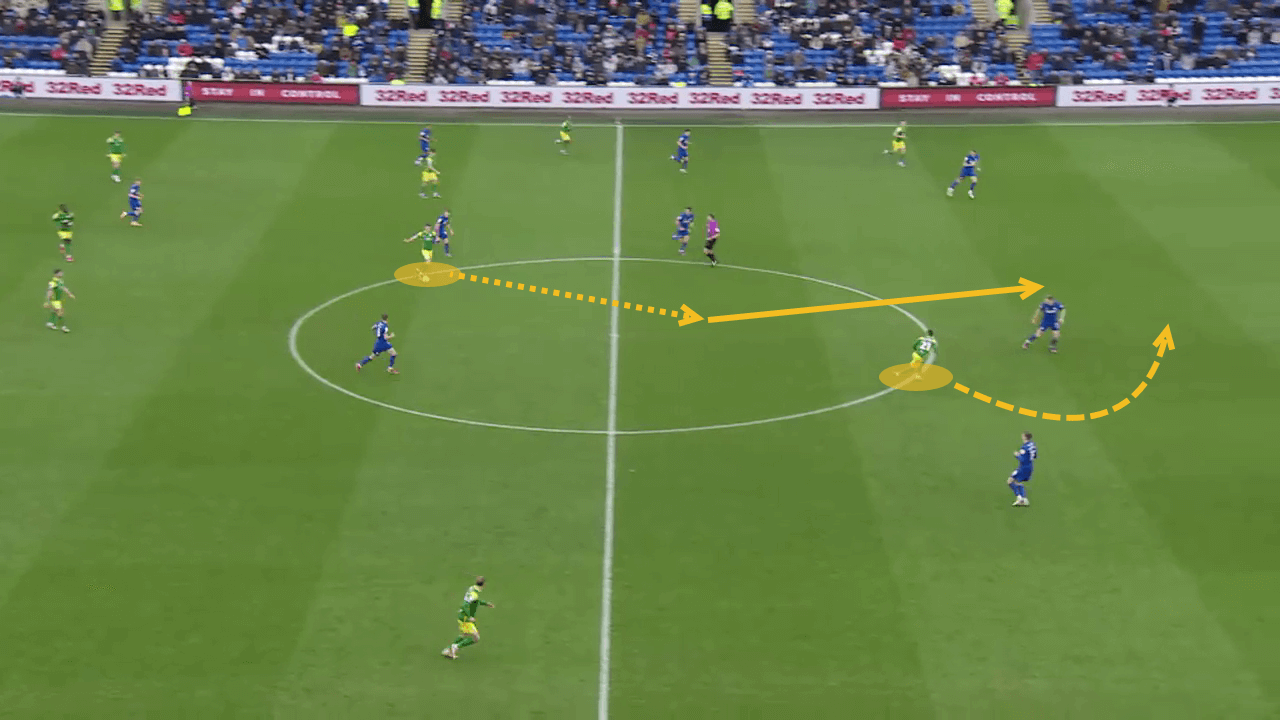
Whiteman is more than good enough in advanced positions to play as an ‘8’ if asked. However, this position does not get the best out of him as his long passing is less effective.
When advancing up the pitch, Whiteman does sometimes chip in with a goal. He got four Championship goals last season, two of which came directly from freekicks. His set-play ability is something which is highly valued, as he is a regular free-kick and corner taker.
His movement to arrive in the box is something that could be added to his game. However, he is restricted by the role he plays.
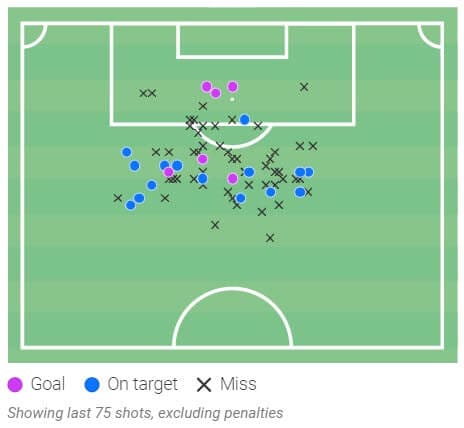
The large majority of Whiteman’s shots come from outside the area, however, three of his most recent goals — as indicated by the shot map — all came in close proximity to the goal. If Whiteman can find a way to arrive more frequently in the box then goals will be scored. Saying this, he is also dangerous from long range.
Following a largely successful first full season in the Championship, teams have begun to notice the impact Ben Whiteman has on his team. Early signs from the start of the 2022/23 campaign are that teams are going to mark Whiteman tightly in the build-up.
Doing this stops Preston’s main way of building up and ultimately causes them to play long or through someone else.
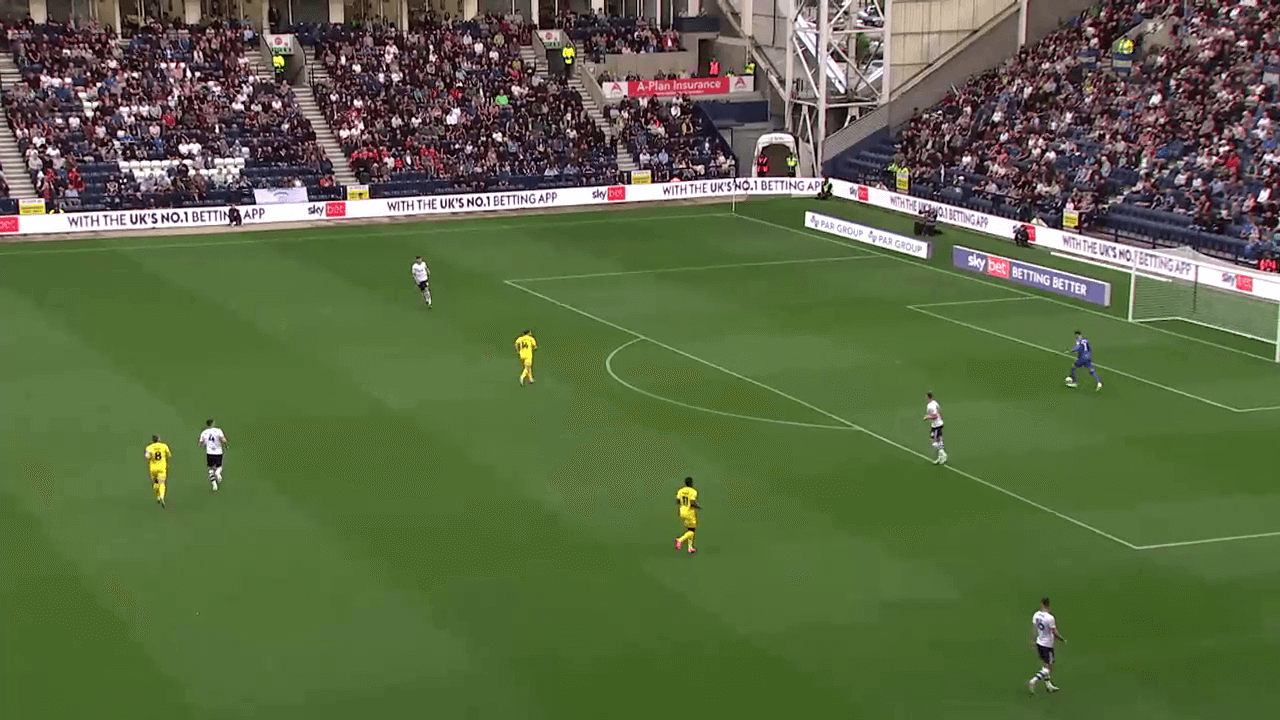
The opposition has set up in a way that makes it hard for Preston to build up using their back three. Whiteman is usually utilised and progresses the ball with his forwards passing. He is now being marshalled to stop this.
This is an issue which needs to be addressed by manager Ryan Lowe. An introduction of a double-pivot in the build-up may make things better and easier. The risk is that the balance of the team further up the field then shifts. This issue is definitely something to keep an eye on.
Ben Whiteman needs to be clever with his movement and make sharp bursts to try and find some space. This is risky if closely marked as if the ball is lost in the buildup stage then it is likely going to lead to an opposition goal. Whiteman should learn when to make movement trying to lose his marker.
Conclusion
Whiteman is quickly becoming an excellent Championship midfielder with the ability to go toe-to-toe with some of the best in the league. He is so well-rounded and plays his role so well that he has earned his place as one of the first names on Ryan Lowe’s team sheet.
With just two years remaining on his contract, it will likely be an interesting 2023 summer transfer window for the midfielder as he enters his final year. Many top Championship sides should be keeping tabs on this situation.





Comments